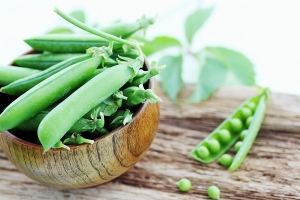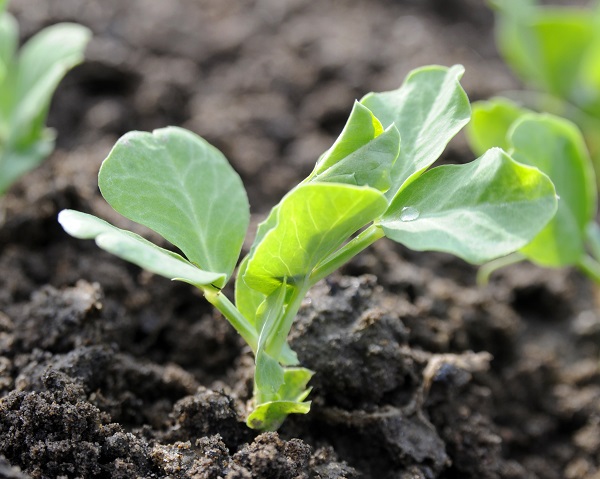Garden peas, including sugar snaps, snow peas and English peas, like cooler weather and the time to plant them in many areas of the country is mid-February (check recommendations for your area). They are frost hardy and the mistake many gardeners make is to wait too late to plant them.
Tender garden peas are one of nature’s gifts. When freshly picked they provide a burst of flavor and springtime 
In addition to their good flavor, they provide a boost when it comes to nutrition your body needs. They are a source of protein, iron, fiber and Vitamin C. Fiber helps reduce cholesterol and the risk of heart disease. Best of all, a 1/2 cup of peas contains less than 70 calories.
To grow garden peas, select well-drained soil that has a pH between 5.8 to 6.5. Plant the seed ½- to 1-inch deep. Some gardeners plant double rows (8 inches apart) to increase yields. The rows should be 30 inches apart.
There are several varieties available. Horticulturist John Vining says that some cultivars that have performed well include Green Arrow, Novella, Oregon Sugar Pod #2 (snow pea), Sugar Ann (edible pod), Sugar Bon (edible pod), Sugar Snap (edible pod) and Tall Telephone (heirloom). Both the Sugar Snap and the Tall Telephone pea varieties will grow tall, up to 6 feet, so a trellis of some type is needed.
This year, try some garden or English peas in your garden. Let your children or grandchildren help you harvest the peas. Nothing is sweeter than eating raw garden peas right off the vine. It will make their taste buds happy. What better way to get children excited about eating their veggies!

